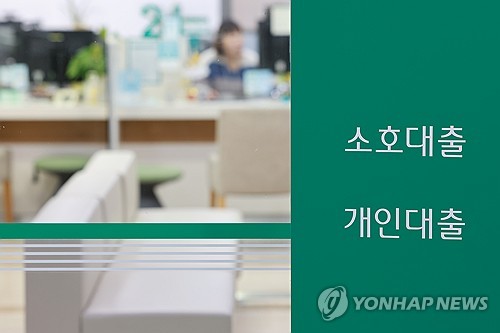
(Seoul=Yonhap Infomax) Hyun Jung Lee, Seul Gi Yoon – South Korea’s banks are expected to further tighten household loan growth in 2025, with the Financial Supervisory Service (FSS) instructing lenders to cap next year’s household loan growth at around 2%, below this year’s level.
The government is maintaining its policy of keeping household debt growth within the nominal GDP growth rate. In line with this, banks are reviewing plans to set their 2025 household loan growth targets at approximately 2 percentage points, lower than this year’s cap.
With a continued focus on financial soundness, policy lending is also likely to be reduced compared to this year, raising the prospect of an even tighter lending environment in 2025.
According to financial industry sources on the 25th, the FSS will soon collect annual household loan management plans from banks for next year. Each bank is required to set its own target for household loan balance growth relative to the end of this year, obtain CEO approval, and submit the plan.
The FSS has reportedly requested that, as in previous years, banks set their household loan growth targets within the nominal GDP growth rate, in line with the government’s household debt management principles.
An FSS senior official said, “We are in the process of gauging what level of household loan growth each bank is internally projecting as they prepare their 2025 management plans. Based on these self-estimated plans, we will review the direction for next year’s total household loan management.”
The official added, “The actual aggregate target can only be calculated once macro indicators such as next year’s economic growth and inflation forecasts are finalized. Adjustments and penalties for exceeding this year’s targets will be reflected after year-end results are confirmed.”
The Bank of Korea is expected to raise its 2025 real GDP growth forecast to 1.8–1.9% in its revised economic outlook on the 27th, reflecting stronger-than-expected export and domestic demand recovery. This aligns with projections from the government, Korea Development Institute (KDI), International Monetary Fund (IMF), and the average of global investment banks.
However, the financial sector remains cautious, noting that even if the Bank of Korea’s growth forecast is revised upward, it is unlikely to result in a higher household loan growth cap. “Even if the growth rate rises slightly, the absolute level remains low, so the overall management framework will not change,” said a bank official. “Unlike in the past, when nominal growth rates of 3–4% allowed for more generous lending, the entrenched low-growth environment means next year’s household loan limits will inevitably be structurally tighter.”
Banks are also voluntarily submitting lower household loan targets in their 2025 plans. With the risk of next year’s allocation being cut and increased regulatory scrutiny if they significantly exceed this year’s cap, a conservative approach to growth rates is becoming the norm.
Additionally, as seen with the June 27 policy measures, banks are mindful of the possibility that unexpected regulatory changes—such as real estate-related restrictions—could force them to sharply reduce their household loan growth targets mid-year, potentially to half of the initial annual allocation.
The financial authorities are also considering deducting any excess lending this year from next year’s total cap, meaning banks that expanded lending aggressively in 2024 could face even tighter limits in 2025.
As of November 20, the four major commercial banks—KB Kookmin, Shinhan, Hana, and Woori—had increased their household loans by 7.8953 trillion won ($6.1 billion), exceeding the FSS’s 2024 cap of 5.9493 trillion won ($4.6 billion) by 32.7%. One bank surpassed its target by 59.5%, while the others exceeded theirs by 39.0%, 30.1%, and 9.3%, respectively.
Another banking sector official commented, “The year-end closure of lending windows is a preview of what’s to come next year. With low growth, tighter oversight, more conservative bank strategies, and penalties all converging, the 2025 household lending squeeze will be even more pronounced than this year.”
hjlee@yna.co.kr
sgyoon@yna.co.kr
(End)
Copyright © Yonhap Infomax Unauthorized reproduction and redistribution prohibited.

